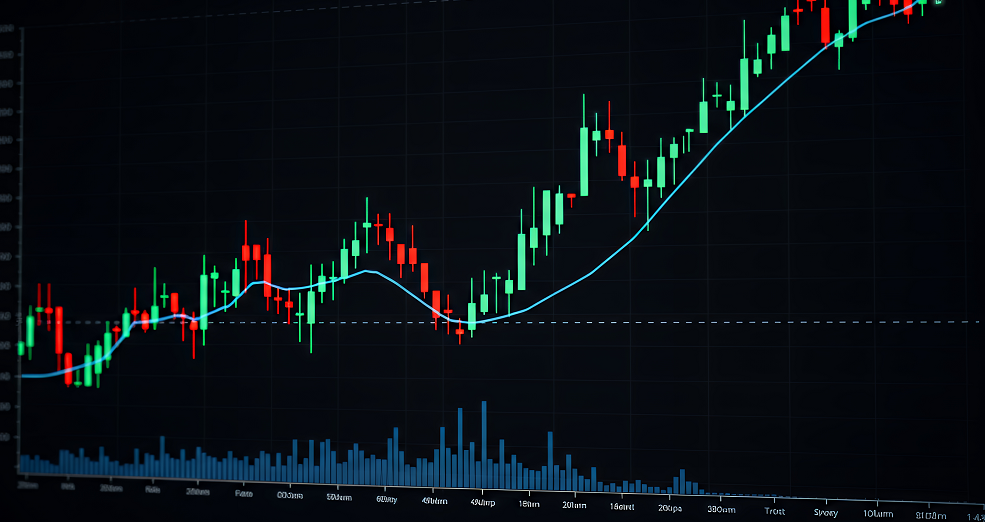IC Markets – Asia Fundamental Forecast | 22 October 2025
What happened in the U.S. session?
Investor sentiment was buoyed by solid earnings and hopes for political stability, causing risk assets to recover. The U.S. dollar’s strength weighed on commodities like gold and oil, while equity market volatility (VIX) dropped sharply as calm returned. The market focus ahead lies on upcoming inflation data, earnings releases, and the resolution of policy uncertainty.
What does it mean for the Asia Session?
Asian traders should focus on UK CPI data and ECB President Lagarde’s speech, both of which will drive volatility and set the tone for global risk sentiment. Sustained gains in Japanese equities, evolving US-China trade dynamics, and gold/oil market fluctuations are also key themes shaping Asian and early European trading. UK CPI y/y (GBP): Released at 6:00 am UK time, the CPI is forecast at 4.0%, up from 3.8% previously. This is a critical inflation gauge, influencing Bank of England interest rate expectations and GBP volatility, which can impact Asian FX trading flows
The Dollar Index (DXY)
Key news events today
No major news event
What can we expect from DXY today?
The dollar has stabilized somewhat mid-week after earlier declines from trade and banking concern-driven safe-haven moves. Market focus is on Fed rate cut expectations, U.S.-China trade talks, and emerging U.S. data delayed by the government shutdown.Overall, sentiment is cautious: upside surprises from trade deals or stronger data could lift the dollar, while downside risks remain from financial sector stress and policy uncertainty.
Central Bank Notes:
- The Federal Open Market Committee (FOMC) voted, by majority, to lower the federal funds rate target range by 25 basis points to 4.00%–4.25% at its September 16–17, 2025, meeting, marking the first policy rate adjustment since December 2024 after five consecutive holds.
- The Committee maintained its long-term objective of achieving maximum employment and 2% inflation, acknowledging recent labor market softening and continued tariff-driven price pressures.
- Policymakers expressed elevated concern about downside risks to growth, citing a stalling labor market, modest job creation, and an unemployment rate drifting up toward 4.4%. At the same time, inflation remains above target, with CPI at 3.2% and core inflation at 3.1% as of August 2025; higher energy and food prices, largely attributable to tariffs, continue to weigh on headline measures.
- Although economic activity expanded at a moderate pace in the third quarter, the growth outlook has weakened. Q3 GDP growth is estimated near 1.0% (annualized), with full-year 2025 GDP growth guidance revised to 1.2%, reflecting slowing household consumption and tighter financial conditions.
- In the updated Summary of Economic Projections, the unemployment rate is projected to average 4.5% for the year, with headline PCE inflation revised up slightly to 3.1% for 2025. The Committee anticipates core PCE inflation to remain stubborn, requiring sustained vigilance and a flexible approach to risk management.
- The Committee reiterated its data-dependent approach and openness to further adjustments should employment or inflation deviate meaningfully from current forecasts. Several members dissented, either advocating a larger 50-basis-point cut or preferring no adjustment at this meeting, revealing heightened divergence within the Committee.
- Balance sheet reduction continues at a measured pace. The monthly Treasury redemption cap remains at $5B and the agency MBS cap at $35B, as the Board aims to support orderly market conditions in the face of evolving global and domestic uncertainty.
- The next meeting is scheduled for 28 to 29 October 2025.
Next 24 Hours Bias
Medium Bullish
Gold (XAU)
Key news events today
No major news event
What can we expect from Gold today?
Gold remains volatile near multi-decade highs, as profit-taking and global sentiment shifts drive short-term swings, but macro drivers like geopolitical risk, falling real rates, and central bank buying continue to support prices for the remainder of 2025. Despite this pullback, gold retains a strong year-to-date performance, up about 50% versus last year and nearly 10% over the past month.
Next 24 Hours Bias
Medium Bullish
The Australian Dollar (AUD)
Key news events today
No major news event
What can we expect from AUD today?
The Australian Dollar is holding on a fragile footing, driven by a mix of soft domestic fundamentals, heightened geopolitical and trade risks, and growing expectations of monetary easing by the RBA. Until global risk sentiment or domestic data show meaningful improvement, the AUD remains exposed to further downside pressure. The AUD/USD exchange rate is holding near the 0.6450–0.6470 range, having slipped further in recent sessions as traders react to disappointing domestic job data and increased bets on RBA policy easing.
Central Bank Notes:
- The RBA held its cash rate steady at 3.60% at its October meeting on 29–30 September 2025, marking a second consecutive pause after August’s 25 basis point cut. The move affirms the Bank’s data-dependent approach as inflation trends within the target range.
- Inflation indicators remained stable through September, with headline CPI likely anchoring near 2.2%—comfortably within the 2–3% band. Insurance and housing costs remain sticky but are increasingly offset by moderation in discretionary goods.
- Trimmed mean inflation is estimated at around 2.8%, signaling underlying pressures remain contained. The Board continues to flag food and energy price volatility as short-term risks, though the broader disinflation narrative holds.
- Global conditions remain a source of uncertainty. U.S. policy expectations and uneven growth in China continue to weigh on commodities, even as trade disruptions have eased marginally since mid-year.
- Domestic growth shows resilience in the housing and services sectors, though manufacturing remains subdued. Household incomes have stabilized, but consumption remains only modest, capped by high borrowing costs.
- The labor market maintains relative tightness, though job growth has slowed notably since the first half of the year. Underutilization has ticked higher, but overall employment conditions remain supportive.
- Wage growth is plateauing, reflecting softer labor demand. Weak productivity continues to keep unit labor costs elevated, underscoring a medium-term concern highlighted repeatedly by the RBA.
- Household consumption prospects remain fragile. The combination of high rents and weak discretionary appetite suggests risks of a consumer-led slowdown in Q4 if confidence fails to rebound.
- The Board reiterated that subdued household spending poses risks to business sentiment and may dampen investment and job creation in the coming quarters.
- Monetary policy remains mildly restrictive. The RBA balanced confidence in inflation progress with caution around global and domestic demand risks, keeping further adjustments conditional on incoming data.
- The Bank reaffirmed its dual commitment to price stability and full employment, noting its readiness to act should conditions shift markedly.
- The next meeting is on 5 to 6 November 2025.
Next 24 Hours Bias
Weak Bullish
The Kiwi Dollar (NZD)
Key news events today
No major news event
What can we expect from NZD today?
The New Zealand Dollar continues to struggle at multi-month lows due to soft domestic data, a dovish central bank outlook, and global risk factors, though some relief comes from narrowing trade deficits and slightly eased trade tensions between the US and China. Market attention remains on both domestic developments and international monetary policy signals for further direction.
Central Bank Notes:
- The Monetary Policy Committee (MPC) agreed to cut the Official Cash Rate (OCR) by 50 basis points to 2.50% on 8 October 2025, exceeding market expectations for a smaller 25-basis-point reduction and signaling a stronger commitment to reviving growth.
- The decision was reached by consensus, marking a shift from previous split votes, and reflected policymakers’ shared view that sustained economic weakness and persistent disinflationary pressures required a more front-loaded policy response.
- Annual consumer price inflation stood at 2.7% in the June quarter and is seen nearing 3% for the September quarter—above the 2% midpoint but within the 1–3% target range. Despite high near-term readings, the MPC projects inflation will return toward 2% by the first half of 2026 as spare capacity and moderating tradables prices curb price momentum.
- Policymakers acknowledged that domestic demand remains weak, with household spending, business investment, and construction activity under pressure. Services inflation, while still elevated, is expected to ease gradually as wage growth slows and unemployment edges higher.
- Financial conditions have eased in line with expectations as wholesale and retail borrowing rates adjust to lower policy settings. Bank lending data indicate a modest uptick in mortgage approvals, though broader credit demand remains subdued.
- GDP growth stalled in the middle of 2025, with high-frequency indicators showing continued weakness into the third quarter. A combination of elevated costs for essentials and falling savings continues to restrain household consumption, while global trade frictions weigh on business sentiment.
- The MPC noted that global uncertainty—particularly from US trade regulation changes and soft Chinese demand—continues to pose downside risks to export sectors, though these are partly offset by a weaker New Zealand dollar improving competitiveness.
- Subject to data confirming a sustained soft patch in activity and moderating inflation pressures, the MPC signaled further scope to reduce the OCR toward 2.25% at its next meeting on 26 November 2025, consistent with current market and Westpac forecasts.
- The next meeting is on 26 November 2025.
Next 24 Hours Bias
Medium Bearish
The Japanese Yen (JPY)
Key news events today
No major news event
What can we expect from JPY today?
The Japanese Yen is trading weaker as political uncertainty, fiscal stimulus expectations, and delayed BoJ rate hikes weigh on the currency, with USD/JPY hovering near its highest levels of the year. Market volatility may intensify after the parliamentary vote and as investors assess the new administration’s economic agenda. Markets are focused on Japan’s parliamentary vote, expected to confirm hardline conservative Sanae Takaichi as the nation’s first female prime minister.
Central Bank Notes:
- The Policy Board of the Bank of Japan decided on 17 September, by a unanimous vote, to set the following guidelines for money market operations for the inter-meeting period:
- The Bank will encourage the uncollateralized overnight call rate to remain at around 0.5%.
- The BOJ will continue its gradual reduction of monthly outright purchases of Japanese Government Bonds (JGBs). The scheduled amount of long-term government bond purchases remains unchanged from the prior decision, with a quarterly reduction pace of about ¥400 billion through March 2026 and about ¥200 billion per quarter from April to June 2026 onward, aiming for a purchase level near ¥2 trillion in January to March 2027.
- Japan’s economy continues to show a moderate recovery, with household consumption supported by rising incomes, although corporate activity has softened somewhat. Overseas economies remain on a moderate growth path, with the impact of global trade policies still weighing on Japan’s export and industrial production outlook.
- On the price front, the year-on-year rate of change in consumer prices (excluding fresh food) remains in the mid-3% range. Inflationary pressures remain broad-based, with persistent cost-push factors in food and energy, alongside solid wage pass-through. However, input cost pressures from past import surges are showing early signs of easing.
- Short-term inflation momentum may moderate as cost-push effects diminish, though rent increases and service-related price gains tied to labor shortages are likely to provide support. Inflation expectations among firms and households continue a gradual upward drift.
- Looking ahead, the economy is projected to grow at a slower-than-trend pace in the near term due to external demand softness and cautious corporate investment plans. However, accommodative financial conditions and steady increases in real labor income are expected to underpin domestic demand.
- In the medium term, as overseas economies recover and global trade stabilizes, Japan’s growth potential is likely to improve. With persistent labor market tightness and rising medium- to long-term inflation expectations, core inflation is projected to remain on a gradual upward trend, converging toward the 2% price stability target in the latter half of the projection horizon.
- The next meeting is scheduled for 30 to 31 October 2025.
Next 24 Hours Bias
Medium Bearish
Oil
Key news events today
EIA crude oil inventories (2:30 pm GMT)
What can we expect from Oil today?
Oil prices remain under pressure from persistent oversupply concerns and weakening global demand, continuing the multi-week bearish trend seen in both Brent and WTI crude benchmarks. Brent crude hovered around $61 per barrel, a five-month low, while WTI dipped to approximately $56.80, reflecting ongoing market pessimism. Inventories have reached record highs, with crude stored on tankers climbing to 1.24 billion barrels, underscoring the substantial supply glut impacting prices.
Next 24 Hours Bias
Medium Bearish





